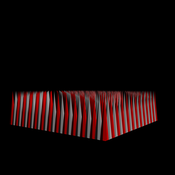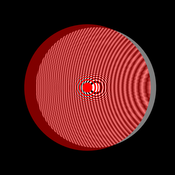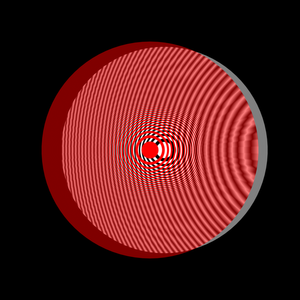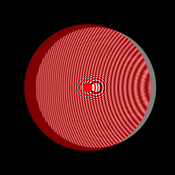Information
- Publication Type: Journal Paper with Conference Talk
- Workgroup(s)/Project(s):
- Date: May 2013
- Journal: Computer Graphics Forum (Proceeding of EUROGRAPHICS 2013)
- Volume: 32
- Number: 2
- Location: Girona
- Lecturer: Thomas Auzinger
- ISSN: 1467-8659
- Event: Eurographics 2013
- Conference date: 6. May 2013 – 10. May 2013
- Pages: 409 – 418
- Keywords: GPU, anti-aliasing, SIMD, filter, rendering, analytic, visibility, close-form, hidden surface elimination, hidden surface removal, GPGPU
Abstract
This paper presents a parallel, implementation-friendly analytic visibility method for triangular meshes. Together with an analytic filter convolution, it allows for a fully analytic solution to anti-aliased 3D mesh rendering on parallel hardware. Building on recent works in computational geometry, we present a new edge-triangle intersection algorithm and a novel method to complete the boundaries of all visible triangle regions after a hidden line elimination step. All stages of the method are embarrassingly parallel and easily implementable on parallel hardware. A GPU implementation is discussed and performance characteristics of the method are shown and compared to traditional sampling-based rendering methods.Additional Files and Images
Additional images and videos
 Fast forward:
Fast forward video (Techsmith Screen Capture Codec)(56MB).
Fast forward:
Fast forward video (Techsmith Screen Capture Codec)(56MB).
 Overview of the algorithm:
The 3D scene is projected onto the image plane (1) and visibility is resolved in this 2.5D space (2). A new edge-triangle intersection algorithm (3) enables us to extend hidden line elimination (4) to full hidden surface elimination by the use of a novel boundary completion method (5).
Overview of the algorithm:
The 3D scene is projected onto the image plane (1) and visibility is resolved in this 2.5D space (2). A new edge-triangle intersection algorithm (3) enables us to extend hidden line elimination (4) to full hidden surface elimination by the use of a novel boundary completion method (5).
 Spikes model:
Analytic rendering of pyramidal spikes. This serves as a stress test of the analytic visibility algorithm and even for high depth complexity and small geometric details the scene visibility is robustly and correctly resolved.
Spikes model:
Analytic rendering of pyramidal spikes. This serves as a stress test of the analytic visibility algorithm and even for high depth complexity and small geometric details the scene visibility is robustly and correctly resolved.
 Zoneplates model:
Analytic rendering of two overlapping zone plates. Visibility of small geometric details is correctly resolved and excellent anti-aliasing up to numeric precision achieved.
Zoneplates model:
Analytic rendering of two overlapping zone plates. Visibility of small geometric details is correctly resolved and excellent anti-aliasing up to numeric precision achieved.
Additional files
Weblinks
BibTeX
@article{Auzinger_2013_AnaVis,
title = "Analytic Visibility on the GPU",
author = "Thomas Auzinger and Michael Wimmer and Stefan Jeschke",
year = "2013",
abstract = "This paper presents a parallel, implementation-friendly
analytic visibility method for triangular meshes. Together
with an analytic filter convolution, it allows for a fully
analytic solution to anti-aliased 3D mesh rendering on
parallel hardware. Building on recent works in computational
geometry, we present a new edge-triangle intersection
algorithm and a novel method to complete the boundaries of
all visible triangle regions after a hidden line elimination
step. All stages of the method are embarrassingly parallel
and easily implementable on parallel hardware. A GPU
implementation is discussed and performance characteristics
of the method are shown and compared to traditional
sampling-based rendering methods.",
month = may,
journal = "Computer Graphics Forum (Proceeding of EUROGRAPHICS 2013)",
volume = "32",
number = "2",
issn = "1467-8659",
pages = "409--418",
keywords = "GPU, anti-aliasing, SIMD, filter, rendering, analytic,
visibility, close-form, hidden surface elimination, hidden
surface removal, GPGPU",
URL = "https://www.cg.tuwien.ac.at/research/publications/2013/Auzinger_2013_AnaVis/",
}


 Paper
Paper

